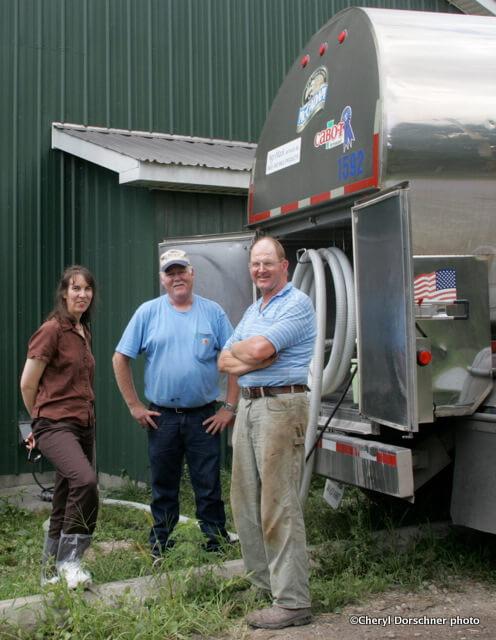John Roberts is at a crossroad – in more ways than one.
His Butterwick Farm stands at the intersection of Cutting Hill, South Bingham and Barnes Roads in West Cornwall. Whether sipping tea on the front porch of the family home, strolling the stanchions that hold his 200 Brown Swiss cattle or meeting the milk truck at the milk house door, he’s rarely more than 25 feet from the middle of a road.
And while they are narrow dirt roads, low on traffic, experience tells him to be concerned. He wonders how he could quarantine his farm in the event of an agricultural emergency.
Growing up in England’s Lake District, Roberts spent summers on another Butterwick Farm learning from David Bousfield, who became his mentor. He studied agriculture at University of Newcastle-Upon-Tyne. That’s why he well knows people who suffered the 2001 outbreak of foot-and-mouth disease, in which 2,000 cases resulted in more than 10 million animals being killed and untold economic, social and psychological losses.
“Many of my friends were affected. One committed suicide. I know how contagious and how devastating this disease can be,” Roberts says.
That’s one reason he agreed to be a test farm for Julie Smith’s four-year research project to study the challenges of developing community-wide agricultural biosecurity plans in Vermont. Smith, a veterinarian and UVM Extension assistant professor, received a $471,000 USDA Agriculture and Food Research Initiative Grant.
Smith chose Butterwick Farm as one of four farms where she and a team of researchers and outreach workers will give farmers, their goods and service providers and town leaders tools and strategies to create their own plans to handle widespread agricultural disease outbreaks. And in the long run, these formulas will be shared online as models for others.
Some aspects of this biosecurity research project that will evolve in the coming years are: meetings to develop on-farm plans; meeting the diverse parties to clarify their roles; workshops to improve and coordinate local and state plans; and drills, videos, websites and the like to educate the public.
Oil Rig Disaster Sets Example
Dealing with biosecurity issues such as these cannot be reactionary, stresses Smith. “It needs to be a proactive and protective plan rather than waiting for the disease to be found locally before responding.”
“The recent oil drilling rig disaster is a good illustration of the concept of fantasy planning,” Smith says. “While our government has plans, and the plans direct those within their jurisdiction, these plans do not control disasters, nor do they guarantee cooperation of individuals or businesses. The BP disaster should also lead us to recognize the danger of focusing on probabilities while ignoring possibilities. Vermonters are prepared for short-term disasters – the probable fire, ice storm, severe weather and flooding – but the less probable though possible disasters have more widespread impact over longer time and are much harder to handle.”
And the plans are not just the bailiwick of farmers. “All people need to know about this, because, if it happens, it will affect everybody,” says Smith. “An agricultural disease outbreak would take a huge amount of cooperation.”
Smith believes that people in official roles – town leaders, emergency officials and those who do business on farms must know how to play key roles in an agricultural emergency. And the public has a responsibility for individual preparedness and a right to know the scenarios.
At stake is health and safety, but also the food supply and rural economy.
Butterwick Farm, which John Roberts owns and operates with his wife, Lisa Roberts, had a small dose of an outbreak in 2008 when mycoplasma bacteria struck. Experts are still not sure how it started. Mycoplasma is spread by animal-to-animal contact. Due to the disease’s variety of symptoms, it took five weeks for a correct diagnosis and a full three months before the disease was eradicated. By then, “I lost 25 percent of my herd and about $30,000, a month’s income,” reports Roberts.
This event, recollections of the foot-and-mouth-disease outbreak in the UK and the Roberts’ diligence in running the best operation they can, combine well with Smith’s expertise to create a nationwide model for best practices.
“My goal is this,” says Roberts, “I want to raise awareness; I want to have a plan; and I want to never have to use it.”
